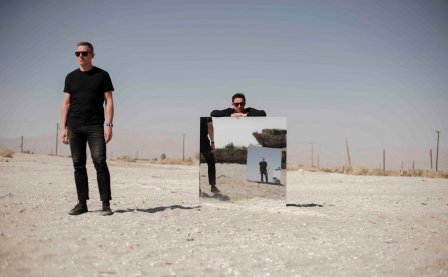The Cinematic Orchestra, brainchild of J. Swinscoe, has always lived up to the literal definition of its name. From impressionistic landscapes to cerebral rhythmic interplay, it’s never been difficult to picture dramatic action accompanying The Orchestra’s music (or at least opening and closing credits). Although each subsequent release sees Swinscoe straying away from the suggestive cinema, Ma Fleur finally finds him in self-contained autonomy. Perhaps it’s because rather than merely thinking about film as inspiration, Swinscoe worked directly with a scriptwriter, who drafted an accompanying screenplay during the album’s creation. No, there’s no bonus DVD with the disc (which will likely give us a reason to buy an expanded version in a few years -- fuck), but the collaboration seems like a natural step in Swinscoe’s writing, and his music is more direct because of it. There are plenty of familiar elements (such as the vocals of Patrick Watson and soul legend Fontella Bass), but in addition to the focus gained by fewer electronic beats and orchestral sweeps, Ma Fleur is less hazy and more literal than ever before.
Although surprisingly close to sounding like a band or a singer-songwriter project, the one thing Swinscoe’s music hasn’t lost is its idiomatic sense of form and structure. No matter how much focus his music gains, his resistance to verse/chorus type music keeps the project unique and in-character. Like previous efforts, Ma Fleur functions well as a large opus, and in that regard, his music still sounds more cinematic and classically influenced than pop. Beginning with “That Home,” things start at a slow, melancholy pace which gradually ascends over the course of the first half of the album. The breathing room in his music is admirable, and it isn’t until “Time and Space” that a drum beat even enters the picture. It’s apparent that Swinscoe is favoring a tight-knit chamber sound as opposed to his previous works of more massive grandeur.
Very much an album with two distinct sides, the latter finds him nudging his way back into familiar territory. Whereas Ma Fleur’s first half sees Swinscoe working within imitations and relating on a more personal level than ever before, the second half features more reverberated vocals, tightly manipulated beats, and a wider palate of sounds in general. By the last song, however (a loose reprise of the intro, in which the album manages to come around full circle), Swinscoe’s song cycle seems fully coherent and capable of anything. He takes risks, and as a result Ma Fleur takes a level of trust that often doesn’t payoff in music. It’s an awful feeling to sit and listen to an album, hoping it will make sense by the end, and having that wish unfulfilled. Don’t get me wrong, I admire those who have the gall to take a risk and fall on their face. But the albums that take risks and manage to triumph? Well, let’s just say I think of those as monumental works. Not to over-glorify Ma Fleur -- it’s not that kind of album, and it’s not as decadent or glamorous as Motion or Every Day. But its sharpness in wake of modesty might make it The Cinematic Orchestra’s biggest accomplishment to date.
More about: The Cinematic Orchestra



